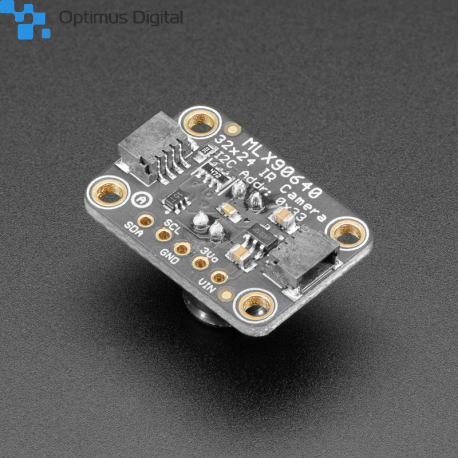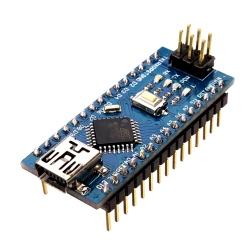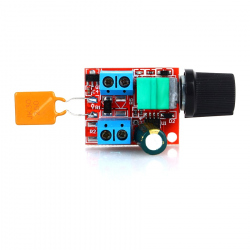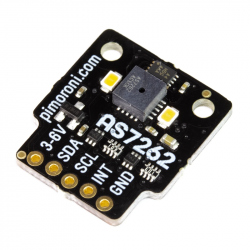Dupa plasarea solicitării de comandă, in sectiunea Istoric puteti vedea cate solicitări de comandă mai avem de procesat inaintea dumneavoastra
Program de lucru: Luni - Vineri 9:00 - 18:00, pauza 13:00 - 14:00.
Se efectueaza lucrari de mentenanta la site si pot aparea erori. In cazul in care intampinati erori va rugam sa reincercati mai tarziu.
Ridicarea personala este disponibila pentru comenzile achitate in avans. Se pot ridica dupa ce sunt pregatite.
No products
 View larger
View larger
Adafruit MLX90640 IR Thermal Camera Breakout - 55 Degree
P4407
New product
You can now add affordable heat-vision to your project and with an Adafruit MLX90640 Thermal Camera Breakout. This sensor contains a 24x32 array of IR thermal sensors. When connected to your microcontroller (or Raspberry Pi) it will return an array of 768 individual infrared temperature readings over I2C.
See description for more details about the product.
Add to cart now!
1 Item
Warning: Last items in stock!
- Write a review
- Remove this product from my favorite's list.
- Add this product to my list of favorites.
More info
Description
You can now add affordable heat-vision to your project and with an Adafruit MLX90640 Thermal Camera Breakout. This sensor contains a 24x32 array of IR thermal sensors. When connected to your microcontroller (or Raspberry Pi) it will return an array of 768 individual infrared temperature readings over I2C. It's like those fancy thermal cameras, but compact and simple enough for easy integration.
This version has a narrow 55ox35o field of view we also have a version with a wider 110ox70o field of view.
This part will measure temperatures ranging from -40oC to 300oC with an accuracy of +- 2oC (in the 0-100oC range). With a maximum frame rate of 16 Hz (the theoretical limit is 32Hz but we were not able to practically achieve it), It's perfect for creating your own human detector or mini thermal camera. We have code for using this sensor on an Arduino or compatible (the sensor communicates over I2C) or on a Raspberry Pi with Python. If using an Arduino-compatible, you'll need a processor with at least 20KB RAM - a SAMD21 (M0) or SAMD51 (M4) chipset will do nicely. On the Pi, you can even perform interpolation processing with help from the SciPy python library and get some pretty nice results!
This sensor reads the data twice per frame, in a checker-board pattern, so it's normal to see a checker-board dither effect when moving the sensor around - the effect isn't noticeable when things move slowly.
To make it easy to use, we hand-soldered it on a breakout board with a 3.3V regulator and level shifting. So you can use it with any 3V or 5V microcontroller or computer. We've even included SparkFun qwiic compatible STEMMA QT connectors for the I2C bus so you don't even need to solder! Just plug-n-play with any of our STEMMA QT (JST SH) cables.
Even better - We've done all the hard work here, with example code and supporting software libraries to get you up in running in just a few lines of Arduino or Python code.
Technical Details
- I2C compatible digital interface
- Programmable refresh rate 0.5Hz…64Hz (0.25 ~ 32 FPS)
- 3.3V-5V supply voltage, regulated to 3.3V on breakout
- Current consumption less than 23mA
- Field of view: 55ox35o
- Operating temperature -40oC ÷ 85oC
- Target temperature -40oC ÷ 300oC
Product Dimensions: 25.7mm x 17.7mm x 16.0mm / 1.0" x 0.7" x 0.6"
Product Weight: 3.5g / 0.1oz
Don't delay. Buy today.
Add to cart now!

Reviews
Customers who bought this product also bought:
-

Development...
Development board compatible with the Arduino...
24,99 lei
-

5 A PWM...
This 5 A PWM driver module with reverse...
8,56 lei
-

AS7262...
Detect six distinct channels of visible light...
129,00 lei




